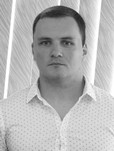Municipal sport center service efficiency improvement model
Фотографии:
ˑ:
Postgraduate student A.S. Groshev1
Dr.Hab., Professor E.V. Kuzmicheva1
1Russian State University of Physical Education, Sports, Youth and Tourism (SCOLIPE), Moscow
The study analyzes the issues of municipal sport infrastructure accessibility for the local communities versus the reported undersupply of the physical education and sports facilities in some regions. Taken for the case study was one of the municipal physical education and sports centers in Ulyanovsk, the city that reports the available municipal physical education and sports infrastructure meeting only 15.2% of the demand versus the relevant social standards (including 31.1% demand for the sport gyms and 10.2% demand for swimming pools etc.) – to offer a municipal sport center service efficiency improvement model with a special priority to the communal demand for physical education and sports services. Objective of the study was to improve the municipal sport center service efficiency. The specific reported service rates of the center facilities were found to vary in a wide range (24.7% to 50.6% of the standard) per year and 6.8% to 82.0% per week. The ways to improve the service efficiency were explored by a questionnaire survey and some of them were implemented in practice. The new municipal sport center service efficiency improvement model (limited by only a few of the proposed initiatives) was found beneficial as verified by the public attendance and service rate growths and, hence, revenues of the facilities as well. Further studies and initiatives will be taken to expand the range of services offered by the municipal sport center and improve the physical education and sports service accessibility and quality.
Keywords: municipal sport center, service range, service rate, service efficiency.
References
- Vlasov E.G., Bragintsev D.A., Voytov A.A., Zhukov S.A. Puti povysheniya effektivnosti deyatelnosti gosudarstvennogo sportivnogo kompleksa [Ways of Increase of Effectiveness of Work of Public Sports Complex]. Teoriya i praktika fiz. kultury, 2013, no. 2, pp. 48-52.
- Gosudarstvennaya programma RF «Razvitie fizicheskoy kultury i sporta» [State Program of the Russian Federation "Development of Physical Culture and Sports"]. Sbornik ofitsialnykh dokumentov i materialov. Ministerstvo sporta Rossiyskoy Federatsii [Collected official documents and materials. RF Ministry of Sport], no. 5-6, 2013, pp. 3-109.
- Kuzmicheva E.V. Povyshenie effektivnosti deyatelnosti sportivnykh sooruzheniy [Ways to improve sport asset management efficiency]. Teoriya i praktika fiz. kultury, 2017, no. 6, pp. 37-39.
- Kuzmicheva E.V. Resursnoe obespechenie otrasli i chislennost vovlechennykh v zanyatiya fizicheskoy kulturoy i sportom [National physical education and sports sector: resource supply versus sporting population]. Teoriya i praktika fiz. kultury. 2018. no. 9. pp. 94-96.
- Planovo-raschetnye pokazateli kolichestva zanimayushchikhsya i rezhimy ekspluatatsii fizkulturno-ozdorovitelnykh i sportivnykh sooruzheniy: Prilozhenie k prikazu GKFK Rossii no. 44 4 Feb 1998 [Estimates of number of trainees and modes of operation of sports and fitness facilities: Annex to the order of the State Committee RF No. 44 February 4, 1998]. RSCPET. M., 1998. 23 p.


